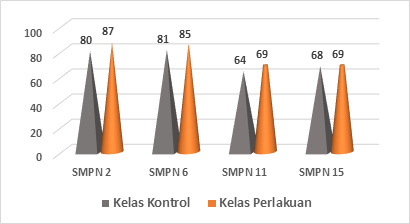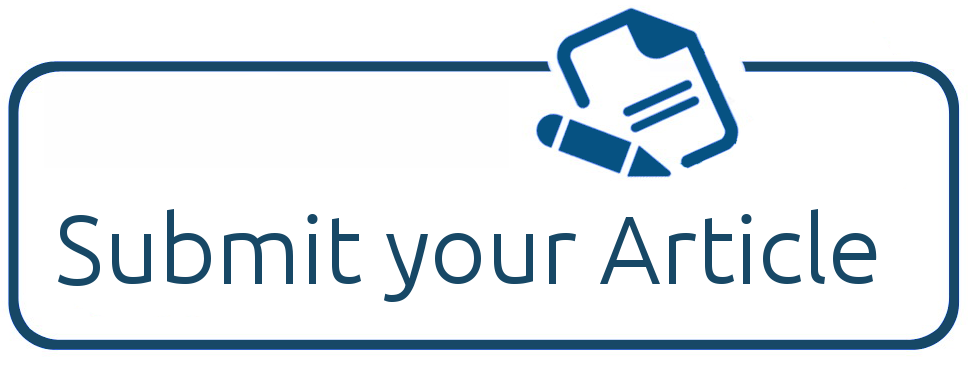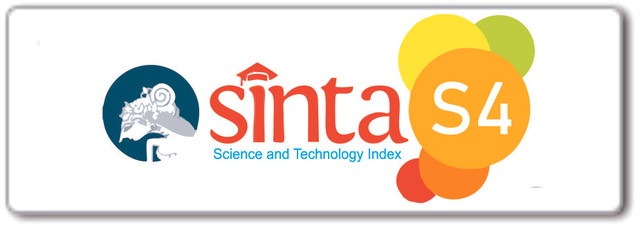Sound of green innovation in merdeka curriculum learning science based on basic education of Ambon city
Abstract
Maluku is an island area with small islands in the islands education that needs to be covered with the purpose of: 1) protecting, considering, rehabilitating, utilizing and enriching natural resources on small islands and an ecological system on a sustainable person; 2) strengthens the participation of the community and government agencies, and encourage community initiatives in the management of natural resources and small islands to achieve justice, balance and sustainability; 3) create social, economic, and cultural values-society through the role of society in utilizing natural resources and small islands. Actually the education unit of currency is developed with diversification principle, a new innovation in the field of science education is Sound of Green (SOG) involves environmental as a source of learning. This study aims: 1) Knowing the increase in the understanding of the student's concept using the Sound of Green approach empowering the Estemic Plant Maluku in the village of attractive city of Ambon City and 2). Knowing the thinking of the Cratif's thinking of the students using the Sound of Green approach empowering the Estemic Plants Maluku in the village of the attractiveness of the city of Ambon City. The results of statistical analysis were found there was a critical thinking difference of garway gasid carbon treatment in different places in the students of JMP City Ambon. The type of local Makuku Fruit food, can now be used to be the type of food and drinks liked by many people. Learning with PJBL is very helpful in developing student creativity thinking and innovating creating products that can be utilized by the community in everyday life.
Downloads
References
Acedillo, N. B., & Saro, J. M. (2023). Students’ lack of interest, motivation in learning, and classroom participation: how to motivate them? Psychology and Education: A Multidisciplinary Journal, 7(8), 636-645.
All Fine Loretha. (2023). The Efforts of lifelong education through life skills for early childhood in play groups. Jurnal Pendidikan dan Pemberdayaan Masyarakat, 10(1), 83–95. https://doi.org/10.21831/jppm.v10i1.59248
Andaresta, O., Sakdiah, H., & Novita, N. (2023). Development of Assessments to Measure Students ’ Science Literacy Ability : Rasch Modeling Analysis. 9(2).
Angilan, J. (2021). Differentiated instruction and students’ literary competence: an experimental study. Middle Eastern Journal of Research in Education and Social Sciences, 2(2), 110–125. https://doi.org/10.47631/mejress.v2i2.230
Arts, F. (2022). CRAFTS and FOLK ARTS [. 3.
Aslamiah, A., Abbas, E. W., & Mutiani, M. (2021). 21st-century skills and social studies education. The Innovation of Social Studies Journal, 2(2), 82. https://doi.org/10.20527/iis.v2i2.3066
Batlolona, J. R., & Mahapoonyanont, N. (2019). Academic learning outcome and creative thinking skills on projectile motion topic. Jurnal Pendidikan Indonesia, 8(1), 1. https://doi.org/10.23887/jpi-undiksha.v8i1.14524
Billingsley, B., Brownell, M., Lewis, T., & Rodriguez, J. (2017). High-Leverage practices in special education. Teaching Exceptional Children, 49(5). https://doi.org/10.1177/0040059917713206
E2030 Position Paper (05.04.2018). (n.d.).
Eslit, E. R. (2023). 21st Century Teaching : Updates , Challenges , and Best Practices. July. https://doi.org/10.13140/RG.2.2.21864.65284
Facione, P. a. (2011). Critical Thinking : What It Is and Why It Counts. Insight assessment (Issue ISBN 13: 978-1-891557-07-1.).https://www.insightassessment.com/CT-Resources/Teaching-For-and-About-Critical-Thinking/Critical-Thinking-What-It-Is-and-Why-It-Counts/Critical-Thinking-What-It-Is-and-Why-It-Counts-PDF
Faizah, S., Nusantara, T., Sudirman, & Rahardi, R. (2022). Constructing students’ thinking process through assimilation and accommodation framework. Mathematics Teaching-Research Journal, 14(1), 253–269.
Febliza, A., Afdal, Z., & Copriady, J. (2023). Improving students’ critical thinking skills: is interactive video and interactive web module beneficial? International Journal of Interactive Mobile Technologies, 17(3), 70–86. https://doi.org/10.3991/ijim.v17i03.34699
Fitri Siti Sundari, Lina Novita, E. H. (2023). Analysis of 21st century skills through. 6(1), 110–118.
Gholam, A. (2019). Inquiry-based learning: student teachers’ challenges and perceptions. Journal of Inquiry & Action in Education, 10(2).
Gunadi, G., Haryono, H., Purwanti, E., Raya, B. R., Pinoh Barat Melawi, T., & Kalimantan, W. (2022). The analysis of 21 st century learning implementation and competency achievement of junior high school students in 3t regions. Innovative Journal of Curriculum and Educational Technology, 11(1), 10–18. https://journal.unnes.ac.id/sju/index.php/ujet/article/view/
Heard, J., Scoular, C., Duckworth, D., Ramalingam, D., & Teo, I. (2020). Critical thinking : skill development framework. Australian Council for Educational Research, 1–23.
Implication And Application MBKM’s Curriculum In Education (Madrasah And Universities). (2023). At-Ta’dib, 18(1), 106–122. https://doi.org/10.21111/attadib.v18i1.9910
Junaidi, J., & Utama, A. A. (2023). Analisis pengelolaan sampah dengan prinsip 3r (reduce, reuse, recycle) (studi kasus di Desa Mamak Kabupaten Sumbawa). Jurnal Ilmu Sosial Dan Pendidikan, 7(1), 706–713. https://doi.org/10.58258/jisip.v7i1.4509
Leasa, M., Papilaya, P. M., Batlolona, J. R., & Nuniary, S. (2023). Project-based learning: changing students’ scientific thinking to be creative from waste natural materials. Jurnal Penelitian Pendidikan IPA, 9(1), 350-359. https://doi.org/10.29303/jppipa.v9i1.2459
Lionenko, M., & Huzar, O. (2023). Development of critical thinking in the context of digital learning. Economics & Education, 8(2), 29-35. https://doi.org/10.30525/2500-946x/2023-2-5
Mahartika, I., Aisyah, S. N., Meisyalla, L. N., & Ilhami, A. (2023). What are the characteristics of learners and the variations of non-electronic learning media? Jurnal Pendidikan Indonesia, 12(2), 305–316. https://doi.org/10.23887/jpiundiksha.v12i2.51325
Mantiri, O. (2020). Motivation in learning. Asian Journal of Education and Social Studies, September, 16–37. https://doi.org/10.9734/ajess/2020/v10i430273
Mardhatillah, O., & Surjanti, J. (2023). Peningkatan kompetensi pedagogik dan profesionalitas guru di indonesia melalui pendidikan profesi guru (PPG). Jurnal Pendidikan Ekonomi Undiksha, 15(1), 102–111. https://doi.org/10.23887/jjpe.v15i1.65200
Mendo-Lázaro, S., León-del-Barco, B., Felipe-Castaño, E., Polo-del-Río, M. I., & Iglesias-Gallego, D. (2018). Cooperative team learning and the development of social skills in higher education: The variables involved. Frontiers in Psychology, 9 (AUG). https://doi.org/10.3389/fpsyg.2018.01536
Merta, L. W. S., Ratminingsih, N. M., & Budasi, I. G. (2023). The integration of technology in english language teaching to stimulate students’ critical thinking. Language Circle: Journal of Language and Literature, 17(2), 333–341. https://doi.org/10.15294/lc.v17i2.39097
Monica Oloo, O., & Muteheli. Florence, A. (2023). Learning profile mapping for differentiated instruction implementation. International Journal of Humanities, Social Sciences and Education, 10(7), 51–56. https://doi.org/10.20431/2349-0381.1007006
Nilyani, K., Asrizal, A., & Usmeldi, U. (2023). Effect of STEM integrated science learning on scientific literacy and critical thinking skills of students: A Meta-Analysis. Jurnal Penelitian Pendidikan IPA, 9(6), 65–72. https://doi.org/10.29303/jppipa.v9i6.2614
Nold, H. (2017). Using critical thinking teaching methods to increase student success: an action research project. International Journal of Teaching and Learning in Higher Education, 29(1), 17–32. http://www.isetl.org/ijtlhe/
Nurdiana, N., Shafwati, D., & Heriyanto. (2023). Speaking Learning Based on Local Cultural Wisdom. Atlantis Press SARL. https://doi.org/10.2991/978-2-38476-046-6_39
Panggabean, F. T. M., Pardede, P. O., Sitorus, R. M. D. S., Situmorang, Y. K., Naibaho, E. S., & Simanjuntak, J. S. (2021). Application of 21st century learning skills oriented digital-age literacy to improve student literacy hots in science learning in class IX SMP. Jurnal Mantik, 5(3), 1922–1930. https://iocscience.org/ejournal/index.php/mantik/article/view/1796
Pradesa, K. (2023). Learning analysis: implementation of the independent curriculum in improving numeracy literacy in elementary schools. EDUHUMANIORA : Journal Pendidikan Dasar, 15(2), 173–182.
Ramadhani, N., Salija, K., & Baa, S. (2023). The correlation between students’ critical thinking skills and their reading comprehension at undergarduate study program english department faculty of languages and literature Universitas Negeri Makassar. Klasikal : Journal of Education, Language Teaching and Science, 5(1), 25–36. https://doi.org/10.52208/klasikal.v5i1.612
Rati, N. W., Kusmaryatni, N., & Rediani, N. (2017). Model pembelajaran berbasis proyek, kreativitas dan hasil belajar mahasiswa [Project-based learning model, creativity and student learning outcomes]. Jurnal Pendidikan Indonesia, 6(1), 60–71. https://ejournal.undiksha.ac.id/index.php/JPI/index
Redhana, I. W. (2019). Mengembangkan keterampilan abad ke-21 dalam pembelajaran kimia. Jurnal Inovasi Pendidikan Kimia, 13(1).
Ridho, M. H., Witarsa, R., Daulay, M. I., & Pebriana, P. H. (2023). Improving mastery of science concepts using problem based learning models in class V in Elementary School. 6(2), 3193–3202.
Riong. (2022). Development of LKPD with a contextual approach to material opportunities in SMP. Holistic Science, 2(3), 117–126. https://doi.org/10.56495/hs.v2i3.51
Sa’, N., Jamaluddin, A. B., Fikri Masaha, M., & Sa’adah Jamaluddin, N. (2022). The influence of motivational factors on student academic achievement. International Journal of Advanced Education and Development, 4(2). http://www.amcs-press.com/index.php/ijaed/article/view/335
Setiyaningsih, I., & Sujarwo. (2023). The STAD learning model supported by scientific student worksheets on learning outcomes and collaboration skills of elementary school students. International Journal of Elementary Education, 7(1), 154–161. https://doi.org/10.23887/ijee.v7i1.57964
Silva, D. (2022). Science and scientific method. Journal of Science and Research (IJSR), 368–410. https://doi.org/10.1037/13915-014
Solovyeva, N., Tapalova, O., & Smirnov, S. (2023). Specifics of the students’ critical thinking formation within active learning space. Frontiers in Education, 8(March). https://doi.org/10.3389/feduc.2023.1132525
Sutaryono, S., & Prasetyaningtyas, F. D. (2020). Penanaman sikap inspiratif melalui pendekatan sains teknologi masyarakat. Scholaria: Jurnal Pendidikan dan Kebudayaan, 10(2), 179–186. https://doi.org/10.24246/j.js.2020.v10.i2.p179-186
Thornhill-Miller, B., Camarda, A., Mercier, M., Burkhardt, J. M., Morisseau, T., Bourgeois-Bougrine, S., Vinchon, F., El Hayek, S., Augereau-Landais, M., Mourey, F., Feybesse, C., Sundquist, D., & Lubart, T. (2023). Creativity, critical thinking, communication, and collaboration: assessment, certification, and promotion of 21st century skills for the future of work and education. Journal of Intelligence, 11(3). https://doi.org/10.3390/jintelligence11030054
Van Den Branden, K. (2015). Sustainable education: Exploiting students’ energy for learning as a renewable resource. Sustainability (Switzerland), 7(5), 5471–5487. https://doi.org/10.3390/su7055471
Wahyuni, E. S., Rahmayanti, H., & Ichsan, I. Z. (2021). Hubungan berpikir kritis dan motivasi belajar terhadap hasil belajar di masa pandemi covid 19. Jurnal PenSil, 10(3), 120–129. https://doi.org/10.21009/jpensil.v10i3.19275
Yasin, F., Bachri, B. S., & Arianto, F. (2020). The interaction between cooperative model and achievement motivation towards the students. Academic Research International, 11(3), 88–93.
Zainuddin, A., Harahap, P., & Naldi, W. (2023). Motivasi guru menulis karya ilmiah; faktor penyebab dan solusi (studi kasus pada guru IPA di Sekolah Menengah Atas Negeri Rejang Lebong -Bengkulu). Edukasi Islami: Jurnal Pendidikan Islam, 12(01), 601–614. https://doi.org/10.30868/ei.v12i01.3839
Zort, Ç., Karabacak, E., Öznur, Ş., & Dağlı, G. (2023). Sharing of cultural values and heritage through storytelling in the digital age. Frontiers in Psychology, 14(February). https://doi.org/10.3389/fpsyg.2023.1104121

Copyright (c) 2025 Pamella Mercy Papilaya, Fredy Leiwakabessy, Chtherine Salhuteru

This work is licensed under a Creative Commons Attribution-NonCommercial-ShareAlike 4.0 International License.
Authors who publish with BIOEDUPAT: Pattimura Journal of Biology and Learning agree to the following terms:
- Authors retain copyright and grant the journal right of first publication with the work simultaneously licensed under a Creative Commons Attribution License (CC BY-NC-SA 4.0) that allows others to share the work with an acknowledgment of the work's authorship and initial publication in this journal.
- Authors are able to enter into separate, additional contractual arrangements for the non-exclusive distribution of the journal's published version of the work (e.g., post it to an institutional repository or publish it in a book), with an acknowledgment of its initial publication in this journal.
- Authors are permitted and encouraged to post their work online (e.g., in institutional repositories or on their website) prior to and during the submission process, as it can lead to productive exchanges, as well as earlier and greater citation of published work.








 This work is licensed under a
This work is licensed under a 